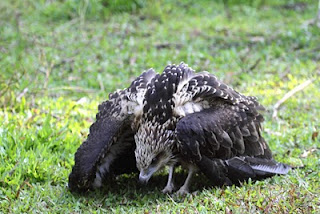New research by Professor Roger Thorpe and colleagues Yann Surget-Groba and Helena Johansson, at Bangor University, UK, is turning conventional evolutionary theory on its head. A genetic study of island lizards shows that even those that have been geographically isolated for many millions of years have not evolved into separate species.
The area where the research was done, Martinique in the Lesser Antilles, is composed of several ancient islands that have only recently coalesced into a single entity. The phylogeny and geology demonstrates that these ancient islands have had their own tree lizard species for about six to eight million years.
The scientists genetically tested the lizards for reproductive isolation from one another. They found that these tree lizards are freely exchanging genes and therefore not behaving as separate species. In fact there is more genetic isolation between conspecifics from different habitats than between those lizards originating from separate ancient islands.
The latest findings suggest the potential importance of speciation due to differences in ecological conditions (ecological speciation).
Details of the research appear in the latest issue of journal PLoS Genetics.




